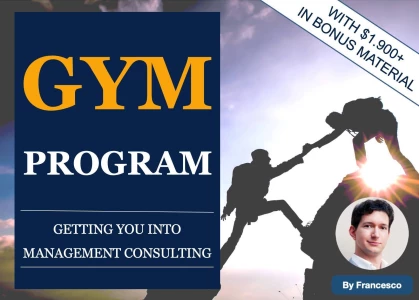Hi,
I have found that it is quite hard to use a specific structure when it comes to a market entry case as the context matters a lot. Given that market entry case appears quite commonly during case interviews, I would like to know if anybody has a good structure I can follow?






Hi Francesco, thank you for the answer. What do you think about analyzing the client's company before delving into the target market - like this we can obtai a comprehensive overview of strengths/weaknesses/financial situation that will provide means to ends when arguing about the 'objective feasibility' as well as the 'best way to enter'. Cheers, -L.
(edited)
Hi Lorenzo, thanks for your comment. I think it’s easier to start from a market analysis for a couple of reasons: (i) if you identify size/growth not sufficient or excessive barriers you already know it won’t be possible to enter and save time in the final decision; (ii) when analysing the company you will have to compute whether you could achieve or not your goal; knowing the industry expected evolution can help you to better identify it (eg you may know already which is the expected growth rate of your revenues if growing as the industry, thus use it in the computation); (iii) since in the market part you analyse the customer segments, you could more easily calculate potential synergies when looking at the company. I agree it makes sense to know the client performance before judging the feasibility and how to enter, indeed I would consider that part as a following step after the company analysis (step 4 in the framework above). Best, Francesco